[Gallery]
Martin Howse
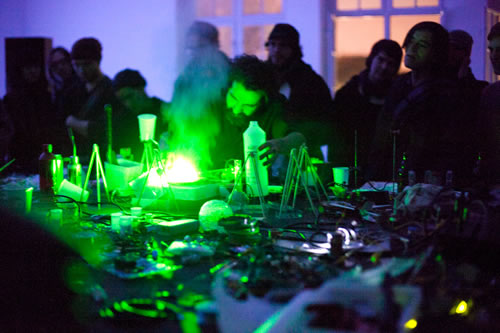
“Substrate” can refer to a (mined) semiconductor base which is later doped, etched, imprinted on with other minerals and materials within a complex industrial process to form an electrical logic gate, a processing unit, the core of the networked machinery which surrounds us. Substrate interfaces with code, yet this set of symbolic, linguistic and logical operations denies the being-substrate, just as the carrier of any signal is erased by the receiver. The mineral necessity of this substrate is equally effaced; logic gates, and thus full computers, can be constructed from water jets, from slime moulds, from earth.
Life Coding
Over the last years, I have worked solo and with others (Martin Kuentz, Shu Lea Cheang, Jonathan Kemp, Ryan Jordan) on software investigations, speculative devices, open laboratories, exhibitions, radio broadcast and performance under the rough heading of Substrate, seeking to literally open and materially disrupt and recode the closed circuit of technological substrate and ecology.
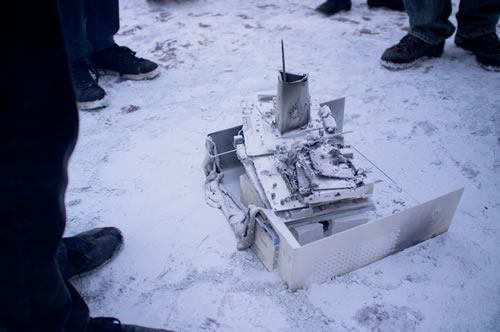

Performances explore the often direct, kinetic transduction of physical, primarily electrochemical processes enacted on various substrates, such as silicon, glass, earth and concrete within precarious and fragile DIY setups and temporary installations.
These substrates are subject to a dual process of excitation and subsequent detection of interference, reaction or response. For example, materials are subject to high heat (hotplate, blow torch, thermite reactions using aluminium and iron oxide) and minute changes are rendered audible through various pickups or transducers, sometimes working with laser light and simple amplification of reflected and disturbed light as audio. A simple interferometer or magnetometer setup, borrowed from 19th-century æther experiments, makes audible minute, unobservable changes and stresses in material.
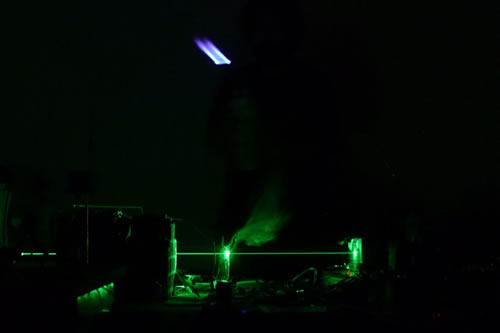

In other instances, modified playback heads recall the turntable / pickup applied to all manner of material (concrete cast platters, revolving crystal surfaces). Playback heads include a rough modification of a basic radio transmitter that changes frequency according to vibration. 1[1. More information on Salpêtrière can be found on the Relay Project website.] Signals are no longer routed direct to the mixer, but further react, distort, interfere and shift other injecter or stray, leaky signals (radio transmitters, loose oscillators).
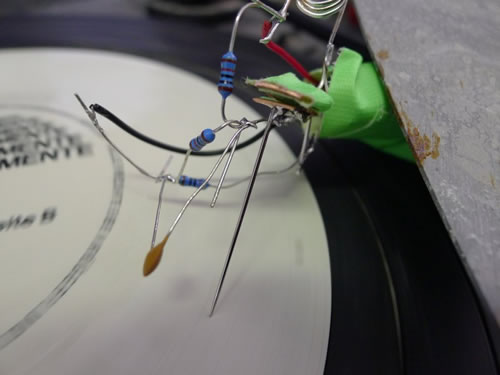
The principles of translation are quite simple, mirroring earlier explorations of the earth’s physicality, banging on the earth surface to gauge unseen, underground geology and disturbance by way of the reflected signal (bowsing).
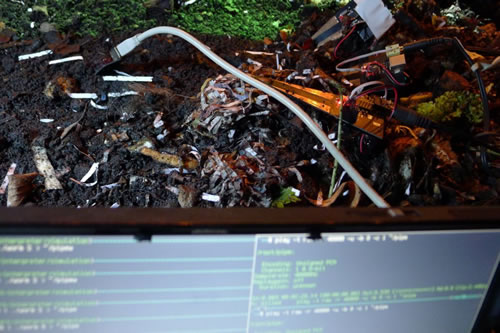
When working with active materials such as forest or graveyard earth (Paris, Media Mediums, Père-Lachaise Cemetery) radio, magnetic and ultrasonic impulses are transmitted into the earth and the distorted signals flowing through the earth, perhaps recoded by worms (in the case of the Composting… series with Shu Lea Cheang), are detected by suitable, simple equipment and heavily amplified. Feedback loops sensitive to skin, touch and the introduction of new chemistry and physical process are established and rendered audible. 2[2. A review and description of the project is offered in Douglas Kahn’s “2013 Rewind” in The Wire 359 (January 2014), p. 106. Available on Shu Lea Cheang’s website.]
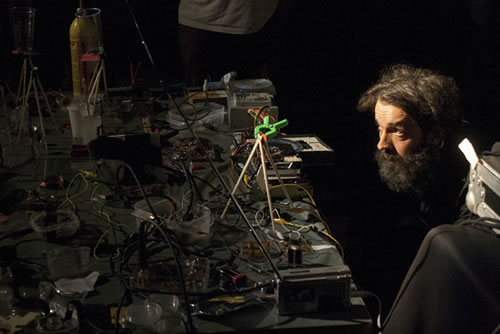
Substrate thus seeks to actively demonstrate that there exist no dividing lines between technical media and bodies, that electronic audio and radio are not simply to be opened one way to “nature,” flesh, brain and skin by way of discrete and well-ordered “sensors”, but always engage in a leaky, messy induction which does not attempt to forbid or to control any exchange of affect or surplus energy; a body made of earth.
Audio 1 (23:09). Earth Coding. Live recording from earthcode excitation / tabletop detection performance during the 3rd Transnatural Festival in Amsterdam on 7 September 2012.
Earth Coding
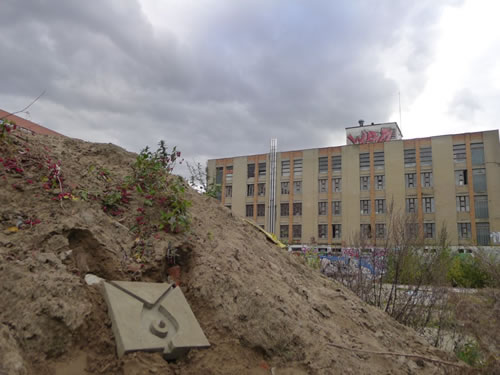
This desire to open the closed electronic circuit of body, nature and technology, to let in the air (following Douglas Kahn), and acknowledge the excess which breaks cybernetic and ecological thinking — performing a dark ecology — finds expression within the earth computing or earth coding series, which shares much technically and conceptually with the performance series.
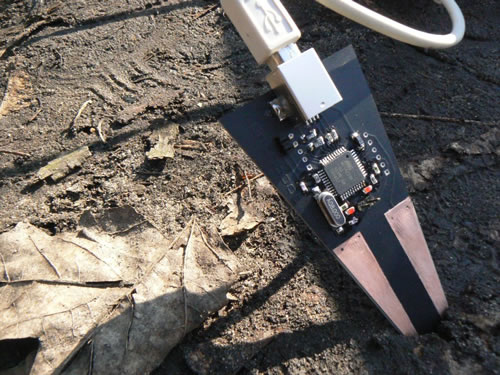
Commencing with the earthboot project, which sought to literally translate minute electrochemical changes in the earth into running software that would boot up any laptop, earth coding attempts to construct a machine made of earth, to introduce conditions within the earth that could allow for its spontaneous re-configuration into technology. 3[3. Some of the science and practicalities of earth coding are explained in an ARTE video documentary produced by The Art Geeks. Vimeo video “the art geeks /// martin howse” posted by “martin dunkelmann” on 21 November 2012.]

After a series of forest sketches, exploring in situ similar performance techniques of energetic transduction (light into electricity, doping the earth with minerals which react with rain water and light to compose new electrical and communication channels), the focus has been on a series of potentially interconnecting research containers, Sketches for an Earth Computer, which underscore the extraction and enclosure of the earth.
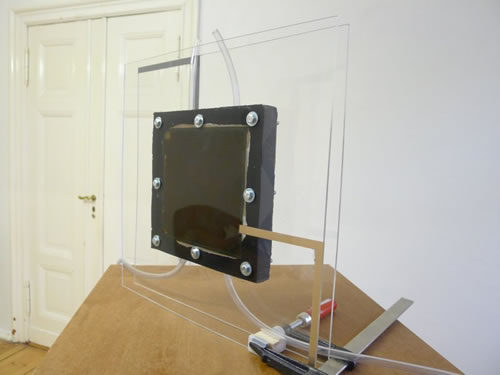
The most recent container, shown in Berlin, emphasizes a literal play between exposure and revelation; exposed and darkened silver nitrate / gelatine mix (one of the first photographic techniques) blocks the entry of light into the earth container interior (a mix of forest earth from close to Berlin, oyster mushroom mycelium and copper II oxide) that seeks to expose itself and react to light. 4[4. For more information on the project, read an interview with Martin Howse, “Sketches for an Earth Computer,” in We Make Money Not Art (posted by “Regine”, 24 July 2014).] As in the Substrate series of performances, a literal drama of sheer light (waves) and absolute darkness (our substrate) is enacted, without clear human control.
Extensive research notes and documentation from carious projects are available on the author’s website.
Social top